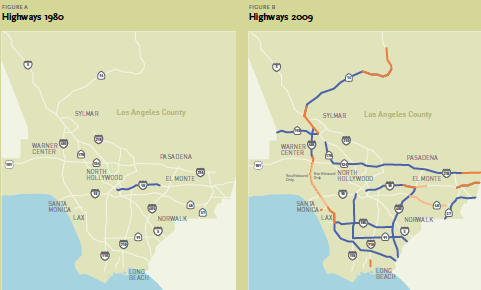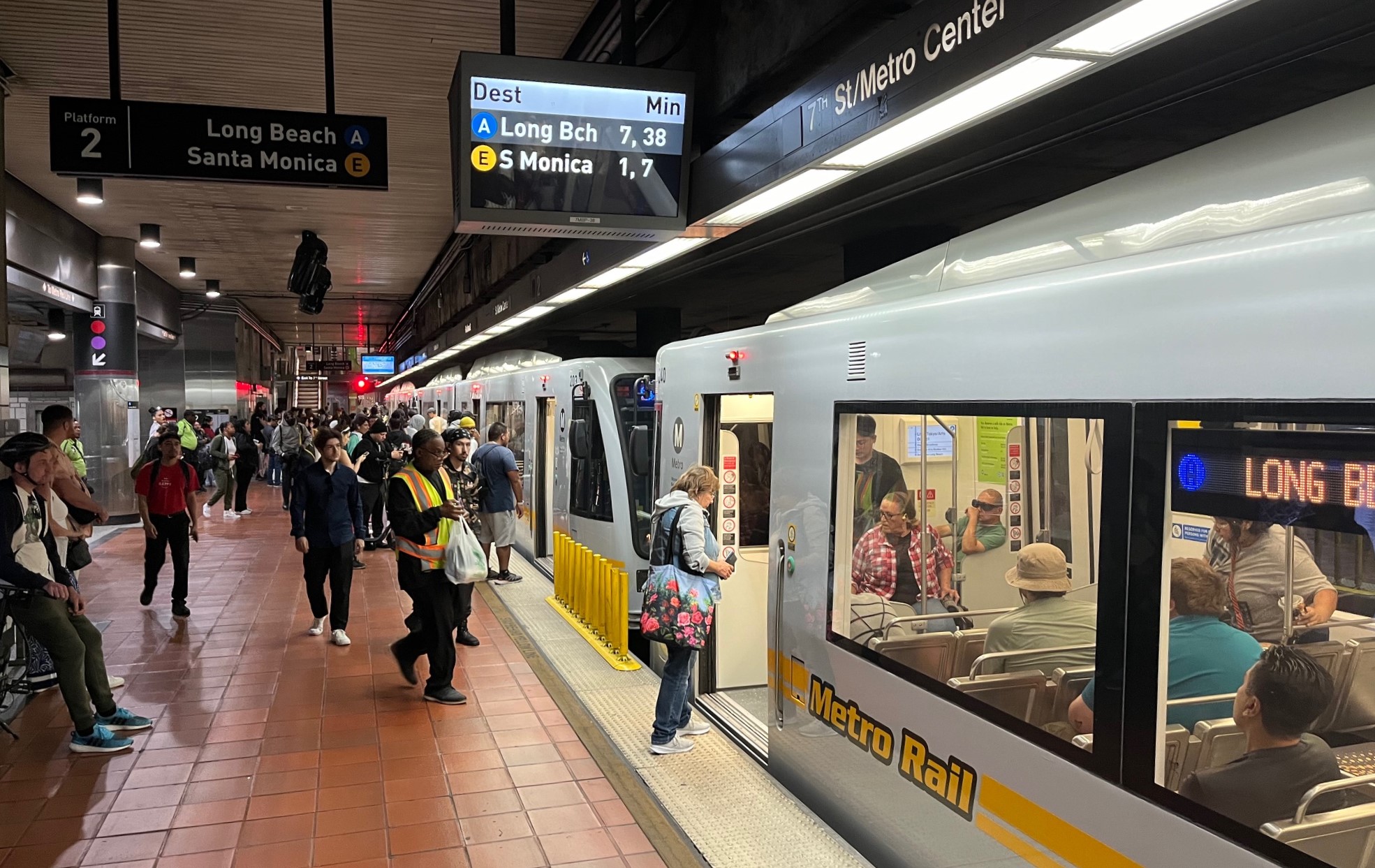
Los Angeles County has one of the most extensive and far-reaching carpool lane networks in the country. And it's still growing. Between 1997 and 2010, the County added 244 lane miles of HOV lanes bringing the total system to 513 lane miles. Pretty much every highway expansion project in the county is an HOV project as the greenwashing the claim that these projects take cars off the road tends to blunt criticism.
Today, that construction trend continues. The largest stimulus project, both in scope of project and cost to taxpayers, in the country is the I-405 widening project, which is heralded by Metro as a chance to connect several of its other carpool projects. It's going to be worth it, they assure the public, especially those that have to deal with the construction impacts in their daily lives.
Metro is pretty proud of it's carpool expansion. They have an entire webpage dedicated to explaining the history of the Southern California's carpools, and proudly boast
Today, the Los Angeles County HOV system is carrying more people than any other HOV system in the United States, and is one of the few HOV systems in the country that has been able to sustain a growth in carpools.
There's just one rub. After the billions of dollars spent building and converting carpool lanes, including those funds being sunk into projects such as the 405 widening right now, that statement is false.
Los Angeles County has seen a decrease in total carpools, even as construction and conversion have reached a fever pitch. Based on census data, 209,685 people in L.A. County commuted via carpool in 2000. Despite population growth and a jump in the number of HOV lanes available, that number dropped to 194,228 in the 2009 update.
Granted the change is close to being within the margin of error, but for Metro this should create some serious policy questions. While Metro is looking for ways to objectively evaluate the value of the HOV projects, when the percentage of people using expanded facilities is falling, 14.7% of commuters carpooled in 2000 versus 11.1% in 2009, the questions should be more pointed. In other words, the question shouldn't be, "how much bang are we getting for our buck" but closer to "Is building HOV lanes a good use of public funds?" and "Do these lanes reduce the number of cars on the road or just move multi-passenger vehicles out of the regular lanes opening space for more single-passenger vehicles?"
Another question should be, "If adding all those HOV lanes isn't enough to get more people into carpools, how can Metro encourage more people to carpool instead of driving solo?"
There's no easy answers. One hint as to the best path for Metro would be to look at what was happening when carpooling was at its zenith, both nationwide and locally. In the 1970's, more Americans chose carpooling than at any other point. Of course, oil prices and gasoline prices were high, but carpooling also got a major boost viathe active cooperation of large employers such as Chevron and Xerox. In the modern world, carpool minded companies could also offer a "cash-out" benefit to employees who save them the cost of a car parking space while choosing to carpool.
Streetsblog would also like to note that 2ooo was selected as the base year for our comparison because it was the most recent year with a full census available. Going back to previous census actually paints a worse picture. In 1990, before federal funds were made available for HOV projects and their were only two HOV lanes in the county, 15.5% of commuters chose to carpool which is the highest number on record.




